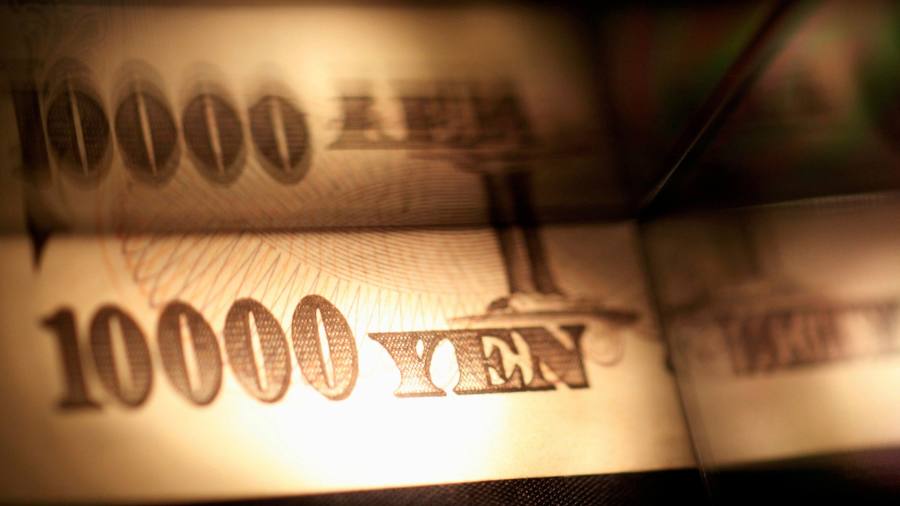Receive free Japanese economy updates
We’ll send you a myFT Daily Digest email rounding up the latest Japanese economy news every morning.
The yen slumped to its lowest level against the dollar since November on Friday, cranking up pressure on the Bank of Japan to tighten its ultra-loose monetary policy and support the faltering currency.
The Japanese currency slid to ¥146.6 per dollar after Jay Powell, chair of the US Federal Reserve, raised the prospect of further domestic interest rate rises, potentially widening the vast gap between US and Japanese borrowing costs.
Japan has been the only major developed market not to raise interest rates over the past 18 months as countries have grappled with the worst inflation shock for a generation.
Although the country has spent decades fighting the threat of deflation, recent signs of economic resilience and domestically driven price rises are raising market expectations that the BoJ will tighten its stance.
“Given the resilience of the Japanese economy with the most recent services producer prices surprising to the upside, I believe that there will be greater pressure on the Bank of Japan to tighten monetary policy at a faster pace to lean against a yen depreciation,” said Tomasz Wieladek, chief European economist at T Rowe Price.
The strain on the currency comes only weeks after the BoJ’s surprise decision to loosen the controls on its government bond market, easing a cornerstone of its ultra-loose monetary policy.
At the end of July the BoJ said it would tolerate yields on 10-year government bonds of up to 1 per cent, from a previous level of 0.5 per cent.
Yields on benchmark Japanese government bonds have drifted higher since, rising 0.03 percentage points this week to 0.66 per cent. Investors expect this trend to continue while inflation remains above its 2 per cent target.
“We think that higher inflation will cause the BoJ to adjust their forecasts at their next quarterly monetary policy meeting . . . this may serve as a prelude to the BoJ declaring victory over deflation and scrapping yield curve control,” said Mark Dowding, chief investment officer at RBC Bluebay Asset Management.
“We would see this pushing 10-year yields towards 1.25 per cent, until then we think that yields will continue to creep higher.”
Investors say the rise of Japanese yields will accelerate bond sales in other major markets as Japanese investors seek out higher returns closer to home.
“As yields increase, large domestic investors have a growing incentive to repatriate funds, selling foreign bonds and investing back in Japanese government bonds,” said Christian Abuide, head of asset allocation at Lombard Odier. “The benefit of doing so is as high as it has been in the last decade.”
T Rowe Price’s Wieladek added that there was already a “significant spillover” from the BoJ’s decision in July: “It’s keeping yields globally more resilient and at higher levels than what people expected.”
Years of higher returns abroad have made foreign assets more attractive to own, meaning Japanese investors are some of the biggest owners of bonds in the US and Europe. According to Commerzbank research, Japanese investors owned more than $2tn in foreign long-term debt securities at the end of 2022, with large holdings in the US, France, the Netherlands and Germany.
A rise in bond yields is expected to accelerate a trend of Japanese investors selling overseas bonds, a shift that had already started owing to the soaring cost of currency hedging.
Many big Japanese investors such as insurers routinely hedge their currency exposure when they buy foreign bonds. Rising interest rates in the rest of the developed world have sharply driven up the cost of doing so, in many cases more than cancelling out the growing yield gap between Japan and other economies.
Read the full article here



